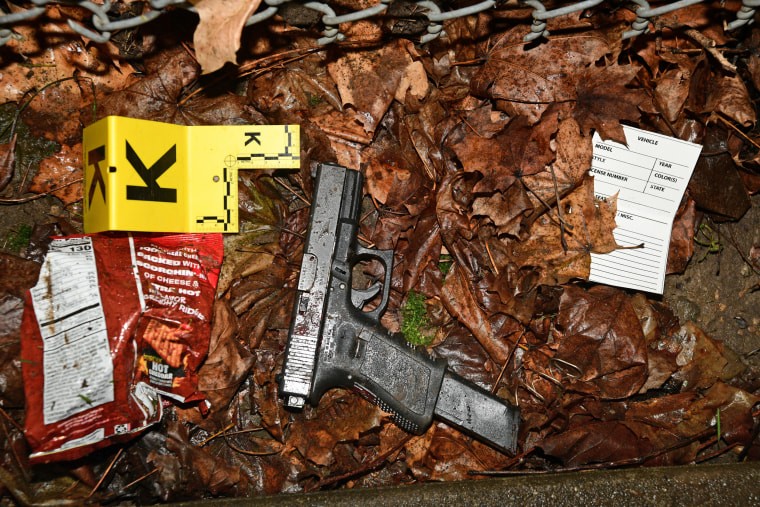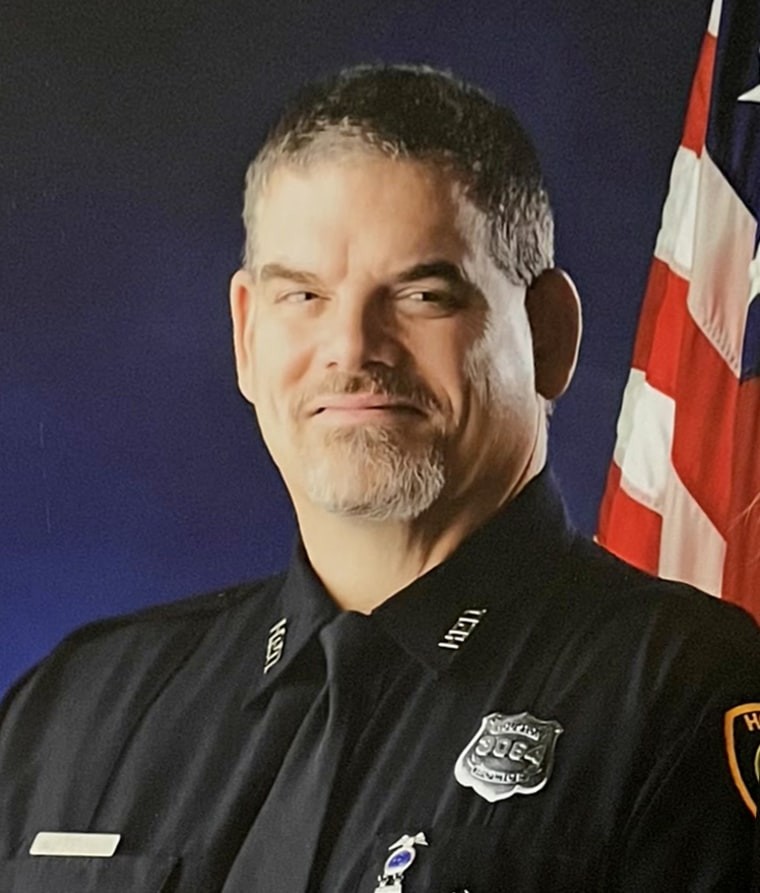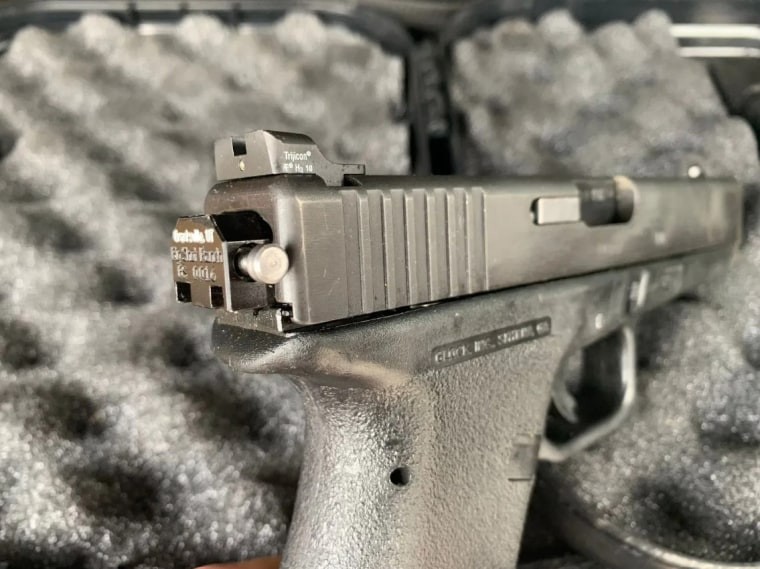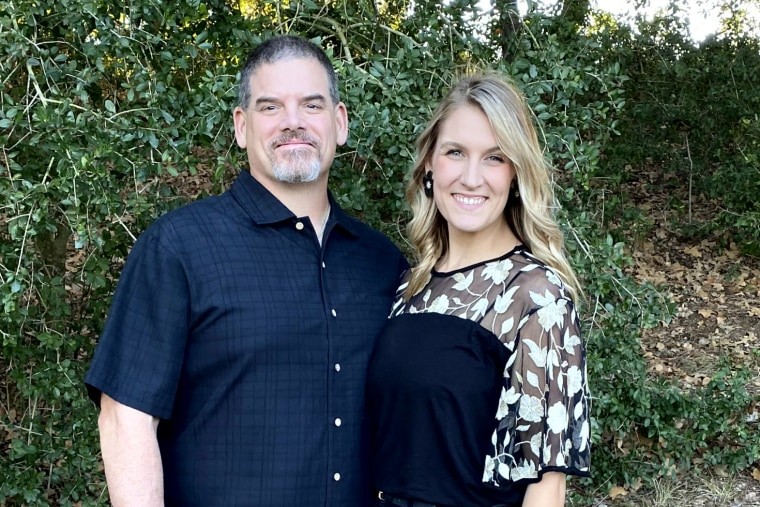What Is A Switch On A Gun? It’s a critical question, especially with the increasing prevalence of these devices. At WHAT.EDU.VN, we aim to provide clear, accessible answers to your questions about firearm modifications and their impact, offering helpful information and insights. Understanding gun modifications and automatic firing mechanisms is essential.
1. Defining a Switch on a Gun
A switch on a gun, often referred to as a “Glock switch” or “auto sear,” is a device designed to convert a semi-automatic firearm into a fully automatic one. Semi-automatic firearms require a separate trigger pull for each shot fired, while fully automatic firearms will continue to fire as long as the trigger is held down. This distinction is crucial in understanding the danger and legality surrounding these devices.
These switches are typically small, inexpensive, and relatively easy to install, making them accessible to individuals seeking to illegally enhance the firing capabilities of their weapons. The simplicity of these devices belies their potential for causing significant harm, as they drastically increase the rate of fire and reduce the shooter’s control over the weapon.
2. How a Gun Switch Works
The functionality of a gun switch revolves around altering the firing mechanism of a semi-automatic weapon. In a standard semi-automatic firearm, the trigger must be released and pulled again for each shot. The switch modifies this process by automating the trigger reset.
Here’s a simplified explanation:
- Normal Semi-Automatic Action: Pulling the trigger releases the hammer or striker to fire a round. The action then cycles, ejecting the spent casing and loading a new round, but the firearm will not fire again until the trigger is released and pulled again.
- With a Switch Installed: The switch bypasses the need to release the trigger. Once the trigger is initially pulled, the switch forces the firearm to continue firing until the trigger is released or the ammunition is exhausted.
This conversion results in a weapon that can fire hundreds of rounds per minute, similar to a machine gun. The increased rate of fire significantly reduces accuracy and control, making these weapons extremely dangerous, especially in civilian settings.
3. The Alarming Rise in Popularity
Law enforcement officials have noted a significant increase in the prevalence of gun switches in recent years. Several factors contribute to this rise:
- Ease of Manufacturing: With the advent of 3D printing technology, individuals can produce these devices at home with minimal expertise or resources.
- Availability: Online marketplaces and underground networks facilitate the distribution of both manufactured and 3D-printed switches.
- Low Cost: The materials required to produce a switch are relatively inexpensive, making them accessible to a wide range of individuals.
The combination of these factors has led to a surge in the availability and use of gun switches, posing a significant challenge to law enforcement efforts aimed at curbing gun violence.
4. The Legality of Gun Switches
In the United States, the legality of gun switches is unequivocally clear: they are illegal under federal law. The National Firearms Act (NFA) of 1934 and subsequent amendments regulate machine guns, including devices that convert semi-automatic weapons into fully automatic ones.
- Federal Law: Under the NFA, possessing, manufacturing, or transferring a machine gun (including a firearm equipped with a switch) is a federal crime, punishable by significant fines and imprisonment. Registration with the Bureau of Alcohol, Tobacco, Firearms and Explosives (ATF) is required for legal possession of machine guns manufactured before 1986, but the manufacture and sale of new machine guns to civilians is prohibited.
- State Laws: While federal law is clear, state laws vary. Some states have stricter regulations than federal law, while others may not specifically address gun switches. This discrepancy can create challenges for law enforcement, as penalties for possessing these devices may differ depending on the jurisdiction.
Lacie Jeffrey, the daughter of Houston Police Officer William Jeffrey, is advocating for Texas law to align with federal law, making the possession of these devices a felony.
5. The Dangers Posed by Gun Switches
The dangers associated with gun switches are multifaceted and far-reaching:
- Increased Rate of Fire: The conversion to fully automatic significantly increases the number of rounds fired per minute, leading to a higher risk of casualties in shooting incidents.
- Reduced Accuracy: Fully automatic weapons are notoriously difficult to control, especially handguns. The rapid firing rate results in significant recoil, making it challenging to maintain accuracy and increasing the likelihood of stray bullets hitting unintended targets.
- Risk to Law Enforcement: As demonstrated in the tragic case of Officer William Jeffrey, gun switches pose a direct threat to law enforcement officers who encounter these weapons in the line of duty.
- Danger to the Public: The combination of increased firepower and reduced accuracy creates a heightened risk of innocent bystanders being injured or killed in shooting incidents.
The ATF has identified machine gun conversion devices as a top enforcement priority due to the escalating danger they pose to communities.
6. Law Enforcement Efforts to Combat Gun Switches
Law enforcement agencies at the federal, state, and local levels are actively working to combat the proliferation of gun switches:
- ATF Enforcement: The ATF is focused on identifying, investigating, and prosecuting individuals involved in the manufacture, sale, and possession of gun switches. The agency conducts sting operations, traces illegal firearms, and collaborates with other law enforcement agencies to disrupt the supply chain of these devices.
- Collaboration with Local Agencies: Federal agencies work closely with local police departments to share information, provide training, and coordinate enforcement efforts. This collaboration is essential for addressing the localized nature of gun violence and preventing the spread of gun switches within communities.
- Legislative Efforts: Efforts are underway in various states to strengthen laws related to gun switches, aligning state statutes with federal law and increasing penalties for possession and use.
Despite these efforts, the challenges remain significant due to the ease of manufacturing and the difficulty of tracking these devices.
7. Tragic Consequences: Real-Life Examples
The devastating impact of gun switches is evident in several high-profile cases:
- Officer William Jeffrey: The Houston police officer was killed by an assailant using a weapon modified with a switch, highlighting the immediate danger these devices pose to law enforcement.
- Brackenridge Police Chief: A police chief in Pennsylvania was killed by a man using a converted machine gun, underscoring the potential for these weapons to be used in attacks against authority figures.
- Dallas Police Officer: A fleeing suspect shot and wounded a Dallas police officer with a modified handgun, demonstrating the threat these devices pose to officers in everyday situations.
These cases serve as stark reminders of the real-world consequences of gun switches and the urgent need for effective measures to combat their proliferation.
8. The Role of 3D Printing
3D printing technology has emerged as a significant factor in the spread of gun switches. Individuals can use 3D printers to manufacture these devices at home, bypassing traditional channels of production and distribution.
- Accessibility: 3D printers are becoming increasingly affordable and accessible, making it easier for individuals to produce gun switches without specialized knowledge or equipment.
- Anonymity: The decentralized nature of 3D printing makes it difficult for law enforcement to track and regulate the production of gun switches.
- Customization: 3D printing allows individuals to customize the design of gun switches, making them more difficult to detect and identify.
The ATF and other law enforcement agencies are working to address the challenges posed by 3D-printed gun switches, but the technology continues to evolve, requiring ongoing adaptation and innovation.
9. Why Gun Switches are a Top ATF Priority
The Bureau of Alcohol, Tobacco, Firearms and Explosives (ATF) has designated gun switches as a top enforcement priority due to several compelling reasons:
- Increased Firepower: Gun switches dramatically increase the rate of fire of firearms, making them capable of causing mass casualties in a short amount of time.
- Enhanced Lethality: The combination of increased firepower and reduced accuracy makes these weapons exceptionally lethal, posing a significant threat to both law enforcement and the public.
- Growing Prevalence: The number of gun switches seized by law enforcement has increased dramatically in recent years, indicating a growing trend that requires immediate attention.
- Risk to Public Safety: The potential for these devices to be used in mass shootings and other acts of violence poses a direct threat to the safety and security of communities across the country.
ATF Director Steven Dettelbach has emphasized the agency’s commitment to combating the proliferation of gun switches, despite limited resources.
10. The Impact on Communities
The presence of gun switches in communities has a wide-ranging impact:
- Increased Violence: The availability of these devices can contribute to an increase in gun violence, as they empower individuals to inflict greater harm in shooting incidents.
- Fear and Anxiety: The knowledge that gun switches are present in a community can create a sense of fear and anxiety among residents, particularly in areas already affected by gun violence.
- Erosion of Trust: The use of gun switches in criminal activities can erode trust between law enforcement and the community, making it more difficult to address crime and maintain public safety.
- Strain on Resources: Responding to incidents involving gun switches can strain the resources of law enforcement agencies, hospitals, and other community services.
Addressing the problem of gun switches requires a comprehensive approach that involves law enforcement, community organizations, and policymakers working together to prevent violence and promote public safety.
11. Understanding the Technical Aspects
Delving into the technical aspects of gun switches requires a basic understanding of firearm mechanics. These devices essentially manipulate the sear, a component that holds back the hammer or striker until the trigger is pulled.
- Sear Function: In a semi-automatic firearm, the sear engages with the hammer or striker after each shot, preventing it from firing again until the trigger is released and pulled anew.
- Switch Interference: A gun switch interferes with this process, preventing the sear from re-engaging and allowing the hammer or striker to continue cycling as long as the trigger is depressed.
This modification transforms the firearm into a fully automatic weapon, capable of continuous firing.
12. The Role of Education and Awareness
Raising awareness about gun switches is crucial for preventing their proliferation and misuse. Education efforts should target various audiences:
- Law Enforcement: Providing training to law enforcement officers on how to identify gun switches and safely handle firearms equipped with these devices.
- The Public: Educating the public about the dangers of gun switches and the legal consequences of possessing or using them.
- Gun Owners: Informing gun owners about the importance of responsible gun ownership and the risks associated with modifying firearms.
- Online Communities: Monitoring online forums and marketplaces for the sale and distribution of gun switches and taking action to remove them.
By increasing awareness and understanding, we can help prevent gun switches from falling into the wrong hands and reduce the risk of gun violence in our communities.
13. The Connection to Organized Crime
While not always the case, gun switches can be linked to organized crime, as these devices can enhance the firepower of criminal organizations and enable them to carry out more violent acts.
- Increased Firepower: Gun switches provide criminal organizations with a significant advantage in confrontations with law enforcement or rival gangs.
- Intimidation and Control: The use of fully automatic weapons can be used to intimidate communities and exert control over illicit activities.
- Black Market Trade: Gun switches can be traded on the black market, providing a source of revenue for criminal organizations.
Law enforcement agencies are working to disrupt the connections between gun switches and organized crime, targeting the individuals and networks involved in the illegal manufacture, sale, and distribution of these devices.
14. The Psychological Impact of Gun Switches
The psychological impact of gun switches extends beyond the immediate victims of gun violence:
- Trauma and PTSD: Witnessing or experiencing gun violence can lead to trauma and post-traumatic stress disorder (PTSD) among individuals and communities.
- Fear and Anxiety: The presence of gun switches can create a climate of fear and anxiety, making people feel unsafe in their homes, schools, and workplaces.
- Erosion of Trust: Gun violence can erode trust in institutions and social structures, leading to feelings of alienation and disempowerment.
- Mental Health Challenges: The stress and trauma associated with gun violence can contribute to a range of mental health challenges, including depression, anxiety, and substance abuse.
Addressing the psychological impact of gun switches requires providing mental health services to those affected by gun violence and working to create safer and more supportive communities.
15. The Global Perspective
While the issue of gun switches is particularly prevalent in the United States, it is not limited to this country. Other nations also face challenges related to firearm modifications and illegal weapons.
- International Trafficking: Gun switches and other firearm components can be trafficked across international borders, contributing to gun violence in multiple countries.
- Cross-Border Crime: Criminal organizations may use gun switches to facilitate cross-border crime, such as drug trafficking and human smuggling.
- Global Cooperation: Addressing the global dimensions of gun switches requires international cooperation among law enforcement agencies, policymakers, and community organizations.
Sharing information, coordinating enforcement efforts, and developing common strategies can help prevent the spread of gun switches and reduce gun violence worldwide.
16. The Ethical Considerations
The debate over gun switches also involves ethical considerations related to gun ownership, public safety, and individual rights.
- Right to Bear Arms: Supporters of gun rights argue that restrictions on gun ownership infringe upon the Second Amendment of the United States Constitution, which guarantees the right to bear arms.
- Public Safety: Advocates for gun control argue that restrictions on certain types of firearms and accessories are necessary to protect public safety and prevent gun violence.
- Individual Responsibility: Both sides of the debate acknowledge the importance of individual responsibility in preventing gun violence and promoting safe gun ownership practices.
- Balancing Interests: Finding a balance between individual rights and public safety is a complex and ongoing challenge that requires thoughtful consideration of all perspectives.
17. The Role of Technology in Detection
Technology can also play a role in detecting gun switches and preventing their use in criminal activities.
- Gunshot Detection Systems: These systems use acoustic sensors to detect the sound of gunfire and alert law enforcement to the location of the shooting.
- Ballistic Imaging: Ballistic imaging technology can be used to analyze bullets and cartridge casings recovered from crime scenes to identify the firearms used in the shooting.
- 3D Printing Detection: Efforts are underway to develop technologies that can detect the production of gun switches using 3D printers.
- Social Media Monitoring: Law enforcement agencies can monitor social media platforms for the sale and distribution of gun switches and other illegal firearm components.
By leveraging technology, we can enhance our ability to detect and prevent gun violence and keep our communities safe.
18. The Importance of Community Engagement
Community engagement is essential for addressing the problem of gun switches and preventing gun violence.
- Building Trust: Building trust between law enforcement and the community is crucial for encouraging people to report suspicious activity and cooperate with investigations.
- Community Policing: Community policing strategies involve assigning officers to specific neighborhoods to build relationships with residents and address local crime problems.
- Violence Prevention Programs: Violence prevention programs provide support and resources to individuals at risk of becoming involved in gun violence.
- Community Education: Community education initiatives can raise awareness about the dangers of gun switches and promote safe gun ownership practices.
By working together, law enforcement, community organizations, and residents can create safer and more resilient communities.
19. The Future of Gun Switch Regulation
The future of gun switch regulation is uncertain, but several trends are likely to shape the debate in the years to come.
- Technological Advancements: As technology continues to evolve, new methods for manufacturing and distributing gun switches may emerge, requiring ongoing adaptation of regulations.
- Legislative Action: Efforts to strengthen gun laws and address the problem of gun violence are likely to continue at the federal, state, and local levels.
- Judicial Review: Legal challenges to gun laws are common, and the courts will continue to play a role in shaping the scope of gun regulation.
- Public Opinion: Public opinion on gun control is divided, and the debate over gun switches is likely to remain highly politicized.
Navigating these challenges will require a commitment to evidence-based policymaking, open dialogue, and a focus on finding common ground.
20. Seeking Help and Reporting Information
If you have information about gun switches or other illegal firearm activities, it is important to report it to the appropriate authorities.
- Local Law Enforcement: Contact your local police department or sheriff’s office to report suspicious activity or provide information about gun switches.
- ATF: Contact the ATF to report violations of federal firearms laws.
- Crime Stoppers: Contact Crime Stoppers to report information anonymously and potentially receive a reward.
If you or someone you know is struggling with thoughts of violence or self-harm, seek help from a mental health professional or crisis hotline. Remember, you are not alone, and help is available.
Do you have more questions about gun modifications or firearm safety? Visit WHAT.EDU.VN to ask your questions and receive free, reliable answers. Our community of experts is here to help you understand complex topics and make informed decisions. Contact us at 888 Question City Plaza, Seattle, WA 98101, United States, or reach out via Whatsapp at +1 (206) 555-7890. Let WHAT.EDU.VN be your go-to resource for knowledge and support.
Close-up of a modified handgun showcasing an automatic conversion device used against law enforcement in Pittsburgh, demonstrating the dangers of illegal firearm modifications.
FAQ: Understanding Gun Switches
| Question | Answer |
|---|---|
| What exactly is a gun switch? | A gun switch, also known as an auto sear or Glock switch, is a device that converts a semi-automatic firearm into a fully automatic one. This modification allows the gun to fire continuously as long as the trigger is held down. |
| Are gun switches legal in the United States? | No, gun switches are illegal under federal law. The National Firearms Act (NFA) regulates machine guns, including devices that convert semi-automatic weapons into fully automatic ones. Possession, manufacture, or transfer of a gun switch is a federal crime. |
| How does a gun switch work mechanically? | Mechanically, a gun switch alters the sear mechanism within a firearm. The sear, which normally holds back the hammer or striker until the trigger is pulled, is modified by the switch. This prevents the sear from re-engaging, allowing the firearm to fire continuously. |
| What makes gun switches so dangerous? | Gun switches are dangerous because they significantly increase the rate of fire of a weapon, making it harder to control and aim accurately. This can lead to unintentional injuries and fatalities, especially in densely populated areas. |
| How are 3D printers contributing to the proliferation of gun switches? | 3D printers allow individuals to manufacture gun switches at home, bypassing traditional channels of production and distribution. This makes it more difficult for law enforcement to track and regulate the production of these devices. |
| What is the ATF doing to combat gun switches? | The ATF has designated machine gun conversion devices as a top enforcement priority. They are focused on identifying, investigating, and prosecuting individuals involved in the manufacture, sale, and possession of gun switches. |
| What should I do if I encounter a gun switch or suspect someone has one? | If you encounter a gun switch or suspect someone has one, contact your local police department or the ATF immediately. Do not attempt to handle the device yourself. |
| How do gun switches impact communities? | Gun switches can contribute to an increase in gun violence, create a climate of fear and anxiety, erode trust between law enforcement and the community, and strain the resources of law enforcement agencies, hospitals, and other community services. |
| Are there any ethical considerations related to gun switches? | Ethical considerations related to gun switches involve balancing the right to bear arms with the need to protect public safety and prevent gun violence. This requires thoughtful consideration of all perspectives and a commitment to responsible gun ownership practices. |
| Where can I report information about gun switches anonymously? | You can report information about gun switches anonymously to your local Crime Stoppers organization. This allows you to provide information without revealing your identity and potentially receive a reward. |




A memorial image of Houston Police Officer William Jeffrey, a victim of gun violence involving an illegally modified firearm, underscores the human cost of these devices.
Remember, finding answers to your burning questions is now easier than ever. Visit WHAT.EDU.VN today and ask away. Our team of experts is ready to provide you with clear, concise, and helpful answers, absolutely free. Don’t hesitate – your quest for knowledge starts now. We are located at 888 Question City Plaza, Seattle, WA 98101, United States. You can also reach us on Whatsapp: +1 (206) 555-7890 or visit our website: WHAT.EDU.VN. Get the answers you need quickly and easily at WHAT.EDU.VN.
Close-up view of a conversion device attached to the rear of a handgun, illustrating the simplicity and concealability of these mechanisms that enable fully automatic firing.
what.edu.vn – Your questions, answered.
Officer William Jeffrey with his daughter Lacie Jeffrey, a poignant reminder of the personal loss and community impact of gun violence facilitated by illegal firearm modifications.

